13 Best Herbal Tinctures For Restless Leg Syndrome
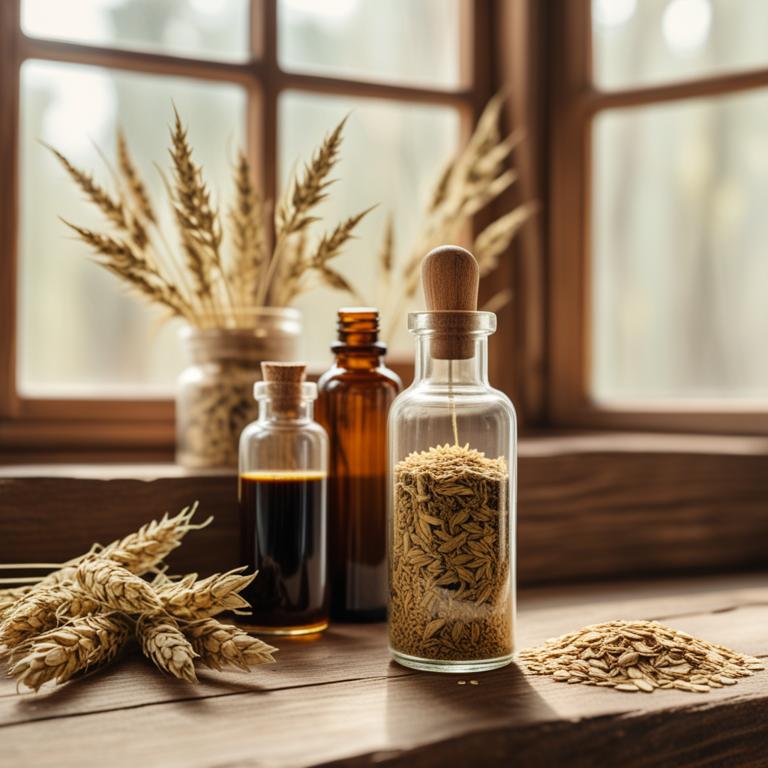
Herbal tinctures for Restless Leg Syndrome are liquid extracts made from various herbs and plants that are used to alleviate the symptoms of this neurological disorder.
These herbal remedies offer numerous benefits, including reducing muscle cramps, spasms, and discomfort associated with Restless Leg Syndrome, as well as promoting relaxation and improving overall sleep quality.
Some effective herbal tinctures for Restless Leg Syndrome include Passionflower, which helps to calm the nervous system and reduce anxiety, Valerian root, which has sedative properties to promote deep relaxation, and Kava, which has anti-inflammatory and pain-relieving properties to soothe muscle cramps.
Additionally, other herbal tinctures such as Ginkgo biloba, Ashwagandha, and Magnesium can also be beneficial in treating Restless Leg Syndrome due to their ability to improve circulation, reduce stress, and regulate muscle function.
According to the study "Paeoniae Radix has been used for legs discomfort such as restless legs syndrome", tinctures containing Paeoniae Radix may be beneficial in improving restless leg syndrome, as meta-analysis indicated statistically significant improvements in the total effective rate and other rating scales compared to non-herbal treatments.
Below there's a list of the 13 best herbal tinctures for restless leg syndrome.
- 1. Valeriana officinalis tinctures
- 2. Passiflora incarnata tinctures
- 3. Glycyrrhiza glabra tinctures
- 4. Lavandula angustifolia tinctures
- 5. Vitex agnus-castus tinctures
- 6. Avena sativa tinctures
- 7. Humulus lupulus tinctures
- 8. Melissa officinalis tinctures
- 9. Cannabis sativa tinctures
- 10. Zingiber officinale tinctures
- 11. Foeniculum vulgare tinctures
- 12. Anemone pulsatilla tinctures
- 13. Aegle marmelos tinctures
Also you may be interested in...
TODAY'S FREE BOUNDLE
Herb Drying Checklist + Herbal Tea Shopping List + Medicinal Herbs Flashcards
Enter you best email address below to receive this bundle (3 product valued $19.95) for FREE + exclusive access to The Aphotecary Letter.
$19.95 -> $0.00
1. Valeriana officinalis tinctures
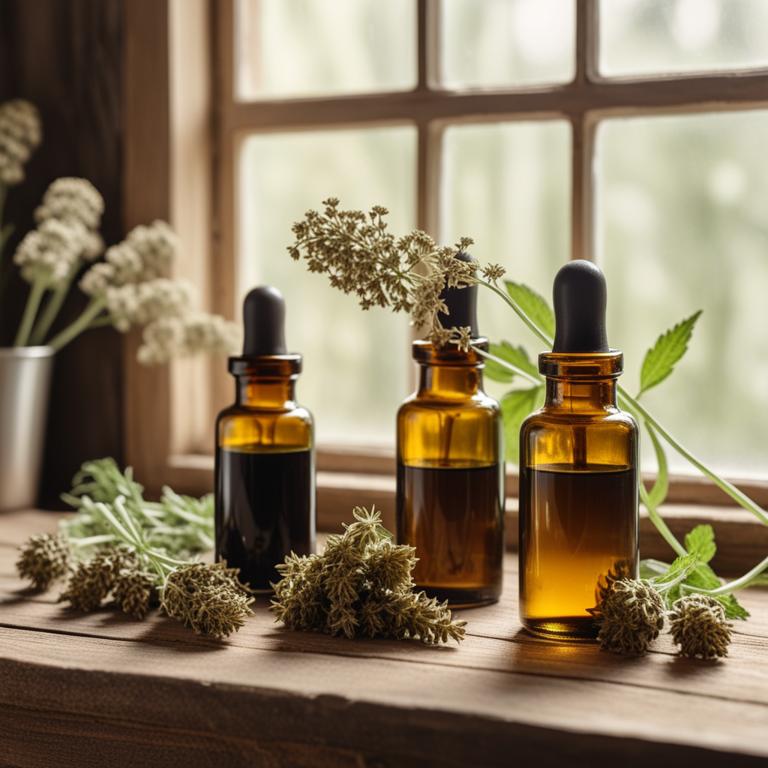
Valeriana officinalis tinctures have been traditionally used to treat restless leg syndrome due to their sedative and muscle relaxant properties, which help to calm the nervous system and reduce muscle spasms.
The valerenic acid and isovaleric acid present in Valeriana officinalis tinctures contribute to its therapeutic effects, as they interact with GABA receptors and reduce neuronal excitability, thereby alleviating the symptoms of restless leg syndrome.
By promoting relaxation and reducing muscle tension, Valeriana officinalis tinctures can help to alleviate the uncomfortable sensations and movements associated with restless leg syndrome, leading to improved sleep quality and reduced symptoms.
Regular use of Valeriana officinalis tinctures has been shown to be beneficial in managing restless leg syndrome, offering a natural and non-invasive approach to managing this condition.
2. Passiflora incarnata tinctures
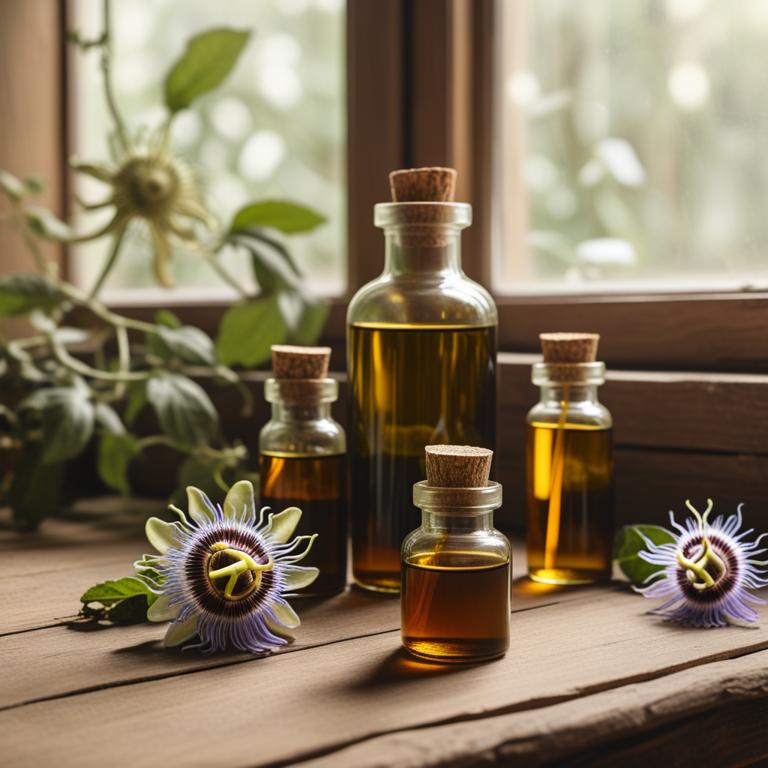
Passiflora incarnata tinctures have been traditionally used to treat restless leg syndrome due to their sedative and antispasmodic properties, which help to calm the nervous system and reduce muscle spasms.
The bioactive constituents, including flavonoids, alkaloids, and glycosides, contribute to its therapeutic effects by modulating the activity of neurotransmitters and reducing inflammation in the affected areas.
By promoting relaxation and reducing anxiety, Passiflora incarnata tinctures can help alleviate the symptoms of restless leg syndrome, providing relief from the discomfort and pain associated with this condition.
The benefits of using Passiflora incarnata tinctures for treating restless leg syndrome include reduced muscle cramping, improved sleep quality, and enhanced overall well-being.
3. Glycyrrhiza glabra tinctures

Glycyrrhiza glabra tinctures have been traditionally used to treat restless leg syndrome, a condition characterized by an uncontrollable urge to move the legs due to uncomfortable sensations.
The anti-inflammatory and antioxidant properties of this herbal preparation help to alleviate the symptoms of restless leg syndrome by reducing inflammation and oxidative stress in the muscles.
Glycyrrhiza glabra tinctures contain bioactive constituents such as glycyrrhizin, flavonoids, and triterpenoids, which have been shown to have a sedative effect on the nervous system and promote relaxation, thereby reducing the symptoms of restless leg syndrome.
Regular use of Glycyrrhiza glabra tinctures has been reported to provide relief from restless leg syndrome, promoting better sleep quality, reduced muscle cramps, and overall improved well-being.
4. Lavandula angustifolia tinctures

Lavandula angustifolia tinctures have been traditionally used to treat restless leg syndrome due to their calming and sedative properties, which help to soothe muscle cramps and spasms.
The herbal preparation contains bioactive constituents such as linalool and linalyl acetate, which have been shown to have a positive effect on muscle relaxation and reduction of anxiety.
These constituents help to reduce the frequency and severity of restless leg syndrome symptoms by promoting relaxation and improving sleep quality.
The benefits of using Lavandula angustifolia tinctures to treat restless leg syndrome include improved sleep, reduced muscle cramps, and a decrease in overall anxiety levels.
5. Vitex agnus-castus tinctures
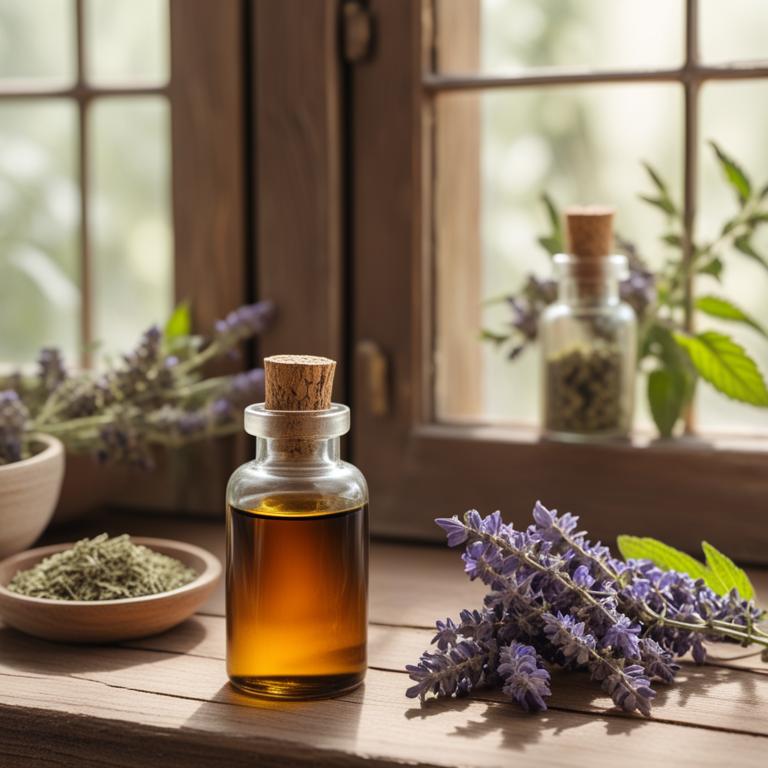
Vitex agnus-castus tinctures have been traditionally used to treat restless leg syndrome due to their sedative and calming properties, which help to reduce symptoms such as restlessness, cramping, and discomfort.
The bioactive constituents present in Vitex agnus-castus tinctures, including flavonoids and iridoid glycosides, are believed to contribute to its therapeutic effects by regulating the body's hormonal balance and reducing inflammation.
By promoting relaxation and reducing anxiety, Vitex agnus-castus tinctures help to alleviate the symptoms of restless leg syndrome, allowing individuals to experience improved sleep quality and reduced discomfort.
The benefits of using Vitex agnus-castus tinctures for restless leg syndrome include natural and non-invasive relief, reduced reliance on pharmaceutical medications, and the potential for long-term symptom management.
6. Avena sativa tinctures
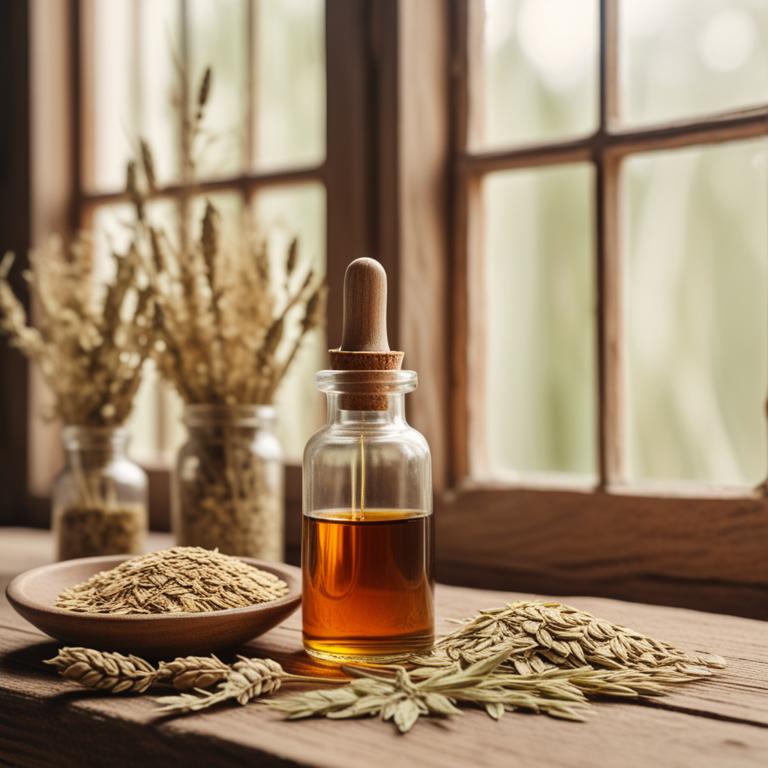
Avena sativa tinctures have been used to treat restless leg syndrome due to their calming and soothing properties, which help to reduce restlessness and anxiety associated with the condition.
The herbal preparation contains bioactive constituents such as avenacosides, avenanthramides, and ferulic acid, which have been found to have a sedative effect on the nervous system and help to relax muscles.
By promoting relaxation and reducing inflammation, Avena sativa tinctures can help to alleviate symptoms of restless leg syndrome, including cramping, twitching, and restlessness.
The benefits of using Avena sativa tinctures to treat this ailment include improved sleep quality, reduced anxiety and stress, and a reduction in symptoms of restless leg syndrome, allowing for a more comfortable and restful sleep.
7. Humulus lupulus tinctures
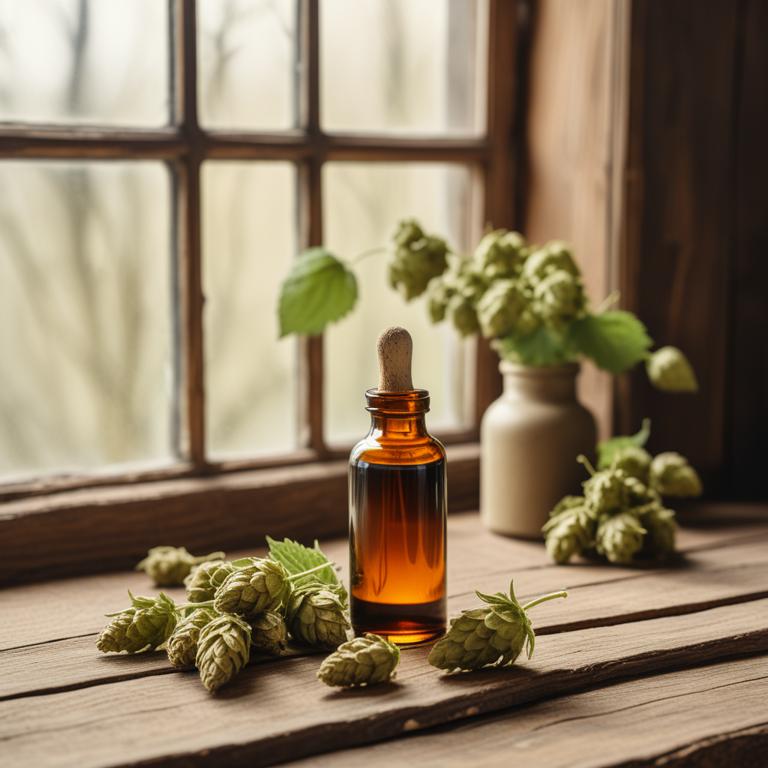
Humulus lupulus tinctures, derived from the hop plant, have been used to alleviate symptoms of restless leg syndrome due to their sedative and antispasmodic properties.
The tincture helps to treat this ailment by promoting relaxation, reducing muscle cramps, and calming the nervous system, making it easier for individuals to fall asleep and stay asleep.
The bioactive constituents of Humulus lupulus, including flavonoids, terpenoids, and essential oils, contribute to its therapeutic effects.
The benefits of using Humulus lupulus tinctures to treat restless leg syndrome include improved sleep quality, reduced muscle pain, and increased overall well-being.
8. Melissa officinalis tinctures
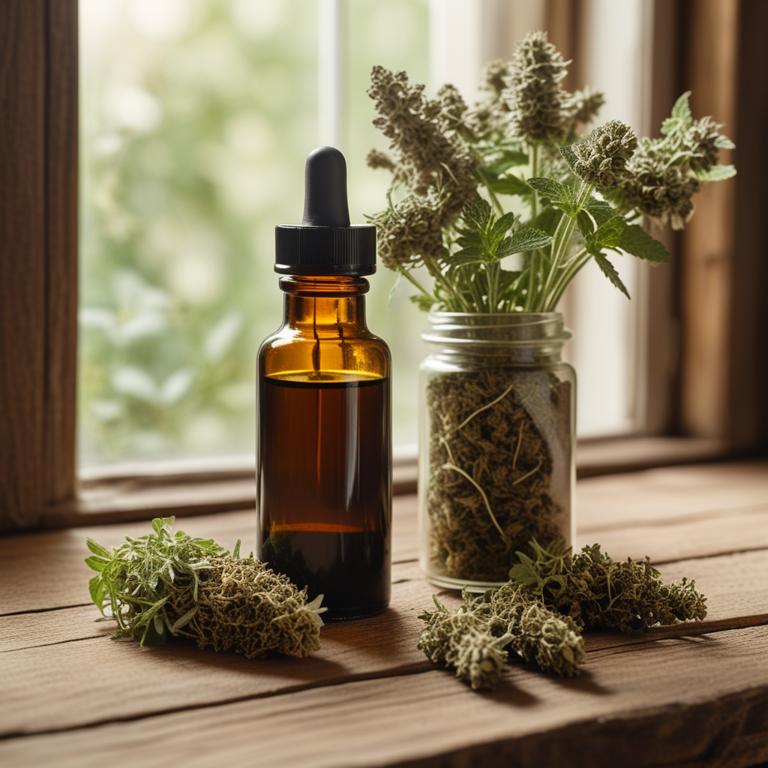
Melissa officinalis tinctures have been traditionally used to treat restless leg syndrome (RLS) due to their calming and relaxing properties.
The herbal preparation's ability to reduce anxiety and promote a good night's sleep helps to alleviate the symptoms of RLS.
The bioactive constituents, including melissic acid, melissic aldehyde, and luteolin, in Melissa officinalis tinctures are believed to contribute to its therapeutic effects, as they have been shown to have a sedative and antispasmodic effect.
The benefits of using Melissa officinalis tinctures to treat RLS include improved sleep quality, reduced symptoms of anxiety and stress, and a decrease in the frequency and severity of RLS episodes.
9. Cannabis sativa tinctures
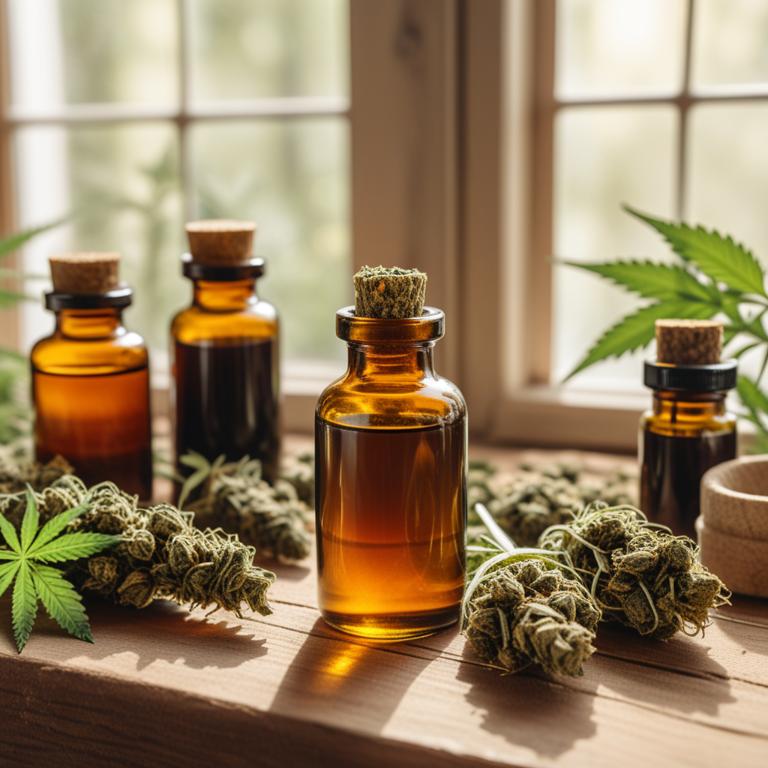
Cannabis sativa tinctures have been found to be effective in treating restless leg syndrome due to their muscle relaxant and anti-inflammatory properties.
The herbal preparation helps to treat this ailment by reducing muscle cramps and spasms, promoting relaxation, and improving sleep quality.
The bioactive constituents of Cannabis sativa tinctures, including cannabinoids such as THC and CBD, terpenes like beta-pinene and limonene, and flavonoids like quercetin, work together to alleviate symptoms of restless leg syndrome.
The benefits of using Cannabis sativa tinctures to treat this ailment include improved sleep, reduced anxiety and stress, and a decrease in the frequency and severity of restless leg syndrome episodes.
10. Zingiber officinale tinctures

Zingiber officinale tinctures, derived from the ginger root, have been traditionally used to treat restless leg syndrome due to its calming and anti-inflammatory properties.
The bioactive constituents of Zingiber officinale, including gingerols and shogaols, help to relax the muscles and reduce inflammation, providing relief from the symptoms of restless leg syndrome.
By reducing muscle tension and promoting relaxation, Zingiber officinale tinctures can help to alleviate the discomfort and urge to move associated with this condition.
The benefits of using Zingiber officinale tinctures to treat restless leg syndrome include improved sleep quality, reduced pain and discomfort, and enhanced overall well-being.
11. Foeniculum vulgare tinctures
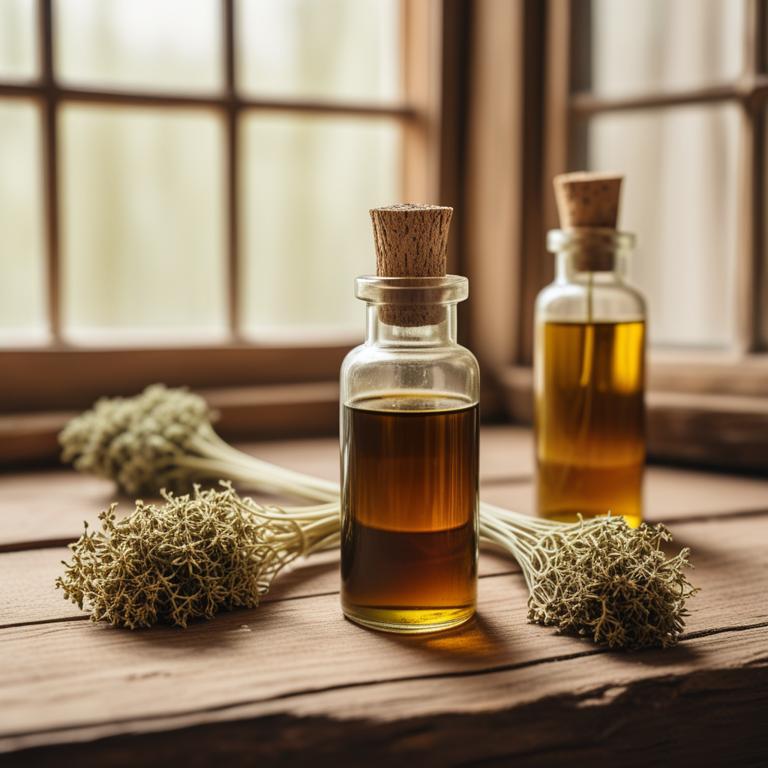
Foeniculum vulgare tinctures have been traditionally used to treat restless leg syndrome due to their soothing and calming properties, which help to reduce muscle tension and spasms.
The bioactive constituents present in Foeniculum vulgare tinctures, including anethole and estragole, have been shown to possess anti-inflammatory and antispasmodic properties that help to alleviate symptoms associated with restless leg syndrome.
By acting on the nervous system, Foeniculum vulgare tinctures may help to reduce symptoms such as twitching, cramping, and restlessness in the legs, promoting relaxation and improving sleep quality.
The benefits of using Foeniculum vulgare tinctures to treat restless leg syndrome include reduced symptoms, improved sleep, and enhanced overall well-being, making it a popular natural remedy for this condition.
12. Anemone pulsatilla tinctures

Anemone pulsatilla tinctures have been traditionally used to treat restless leg syndrome due to their sedative and antispasmodic properties, which help to calm the nervous system and reduce muscle spasms.
The bioactive constituents, including sesquiterpenes and flavonoids, in this herbal preparation are believed to contribute to its therapeutic effects by modulating the activity of neurotransmitters and reducing inflammation.
By alleviating symptoms such as cramping, twitching, and discomfort in the legs, Anemone pulsatilla tinctures can help individuals with restless leg syndrome to experience improved sleep quality and reduced distress.
The benefits of using Anemone pulsatilla tinctures for this condition include a non-invasive and relatively low-risk approach to managing symptoms, as well as the potential for improved overall well-being through reduced stress and anxiety.
13. Aegle marmelos tinctures

Aegle marmelos tinctures have been traditionally used to treat restless leg syndrome, a condition characterized by an uncontrollable urge to move the legs.
The bioactive constituents present in Aegle marmelos, such as flavonoids and alkaloids, have been found to exhibit sedative, anti-inflammatory, and antioxidant properties, which help to soothe the nervous system and alleviate restlessness.
The tincture's calming effect on the nervous system helps to regulate the abnormal electrical activity in the brain that triggers restless leg syndrome symptoms, thereby providing relief from the condition.
The benefits of using Aegle marmelos tinctures to treat restless leg syndrome include improved sleep quality, reduced muscle cramps, and a decrease in the frequency and severity of symptoms.